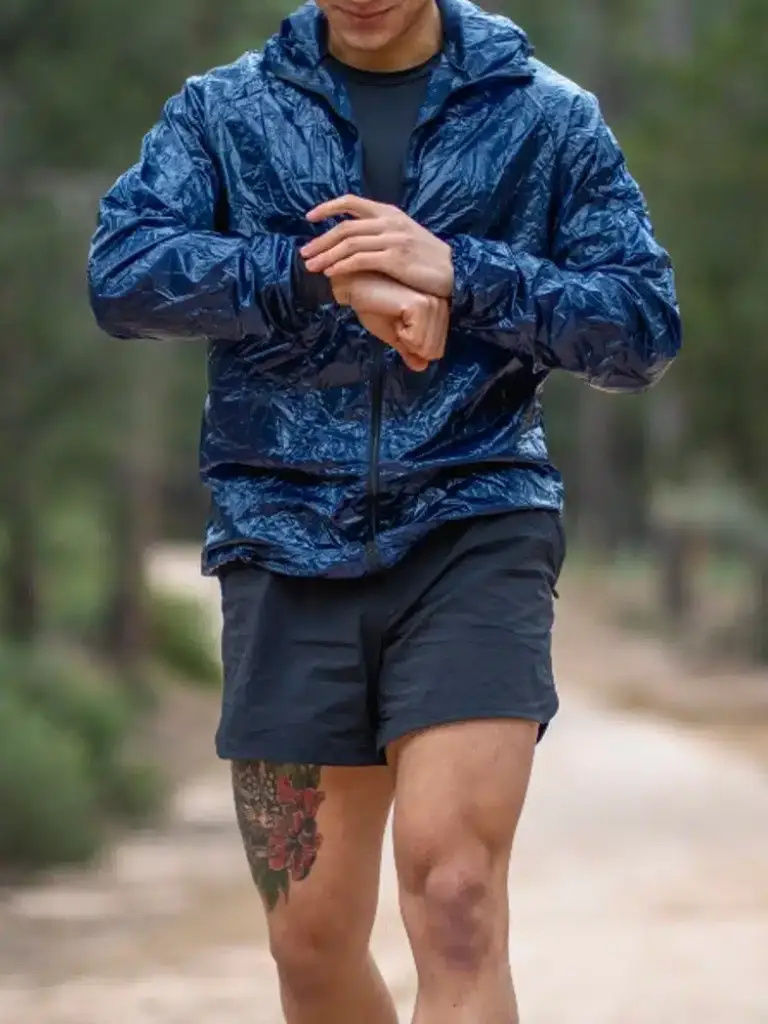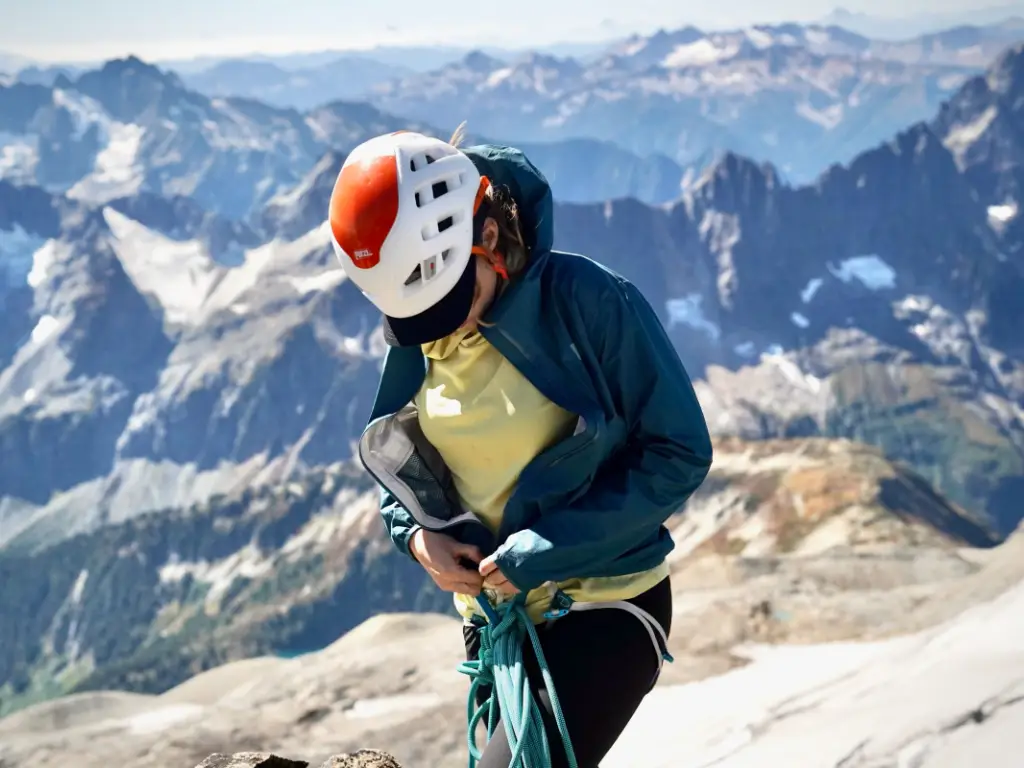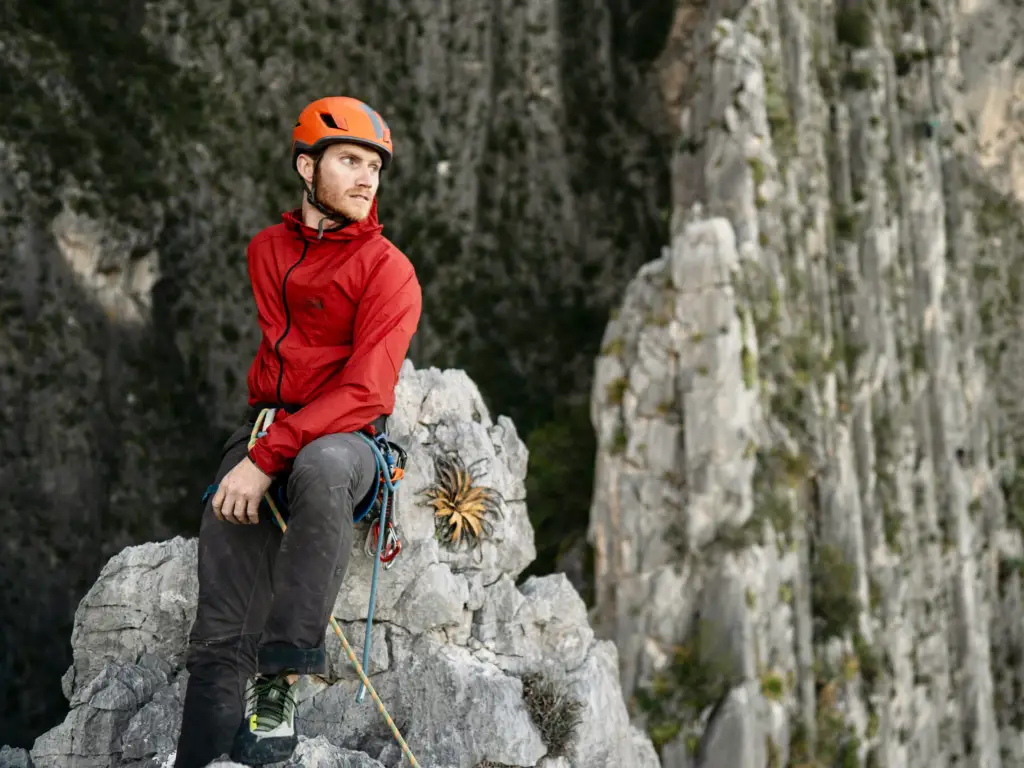Why Windbreakers So Popular?

Windbreakers, initially produced in the middle of the 20th century, have become popular among outdoor enthusiasts and city dwellers. A common query is: are windbreakers warm, specifically when it’s cold?
Windbreakers are very light and versatile. For instance, the Patagonia Houdini weighs approximately 3.6 ounces and can easily fit into its own chest pocket, making it perfect for on-the-go adventures. Their main role is to block off wind, which reduces wind chill and keep you warmer. They are made from tough fabrics such as polyester or ripstop nylon that can obstruct strong winds. Moreover, most of these jackets come with a durable water repellent (DWR) finish that helps resist drizzle.
Even though they trap no heat on their own, windbreakers are great at stopping wind and unwanted airflow. However, they are great for layering with other clothing items, making them an excellent choice for winter wardrobes. If you put on a base layer top underneath the jacket and an insulating mid layer under it, the combination will be pretty warm indeed. This blend of being lightweight and amenable to layering makes a jacket such as this highly versatile and best bet for many in distinct climates.
Now let us look at the windbreaker more closely.
Table of Contents
Understanding Windbreakers and Their Function
Windbreakers are designed to counter wind and light rain. Hence a must-have for cold and windy climates. These work through the materials and build used.
Most windbreakers are made of fabrics such as ripstop nylon or polyester, which are synthetic in nature. Durable, light weight and exceptional at withstanding the force of winds, these textiles block out wind perfectly. A unique aspect of ripstop nylon is that it has a special crosshatch pattern which prevents small tears from becoming large ones thus making the cloth stronger. When it comes to choosing the right and favorite windbreaker for chilly conditions, polyester serves as a barrier for almost all-weather conditions, making it an great choice for keeping warm and staying dry.
Windbreaker’s major function is stopping air from passing through it. The fabric acts as a barrier by being tightly woven together. Fewer openings can be found on the surface created by closely knitted threads allowing little air to pass through. Moreover, several windbreakers come with durable water repellent (DWR) coating that enables them to form beads whenever they come into contact with water so that it rolls off thus keeping you dry during light showers.

Moreover, windbreakers come with elastic cuffs, adjustable hoods. Drawstring hems among other clever designs as well. These features help shut any opening preventing wind infiltration and maintaining your body heat.
Windbreakers have also been designed with elastic cuffs, adjustable hoods, drawstring hems among others which help in closing all holes ensuring that no air gets in while conserving your body warmth.
The unique mix of protection against winds and comfort without being bulky is what sets apart windbreakers from other jackets in general. They don’t provide much insulation, but their ability to resist strong winds, also known as wind resistance, and water resistance, and being layered up makes them good for wearing for outdoor activities involving changing temperatures. Understanding these attributes about them helps us understand why they keep the wearer warm even in chilly and windy conditions.
Which Materials Offer the Best Insulation?
To know if windbreaker jacket can make you warm, it is important to understand the types of insulation materials used in them. Windbreakers are mainly worn to protect against wind and light rain. The use of appropriate insulation materials. However, they can increase their warmth.
Down Insulation
Down comes from undercoats of ducks or geese. It offers an excellent combination of warmth and lightness, which makes it ideal for extremely cold conditions. However, when wet, down loses insulation properties. Thus, jackets with downs must have a waterproof outside layer.
Synthetic Insulation
Such as polyester fibers plus PrimaLoft & Thinsulate substitutes down’s warmth but does exceptionally well even when damp. These do not absorb much moisture so they are good for damp weather. While they might not be as warm as high-end down, a water repellency feature and cheaper cost make them useful.
Wool
A natural fiber that keeps thermal heat even if wet is wool. It can take in water and still keep you warm making it durable but heavy and lack of compressibility unlike synthetic or down insulations.
Fleece and Fleece-like Fabrics
Fleece including microfleece variants is often used in windbreakers as a mid-layer for insulating purposes. It provides added warmth and comfort, dries fast and needs low-maintenance effort during washing. However, during extreme cold periods it may fail to work properly like some synthetic ones.
Advanced Insulation Technologies
New kinds such as thermal-reflective linings or aerogel offer great insulation under severe temperatures. Though these technologies provide excellent warmth, they can be costly or heavier. Hence unsuitable for casual users who want to enjoy everyday life.
| Insulation Type | Source | Characteristics | Best Used For | Limitations |
| Down Insulation | Ducks or geese undercoats | Lightweight, excellent warmth | Very cold conditions | Loses insulation when wet, needs waterproof layer |
| Synthetic Insulation | Polyester fibers, PrimaLoft, Thinsulate | Mimics down, better in wet conditions, cost-effective | Humid climates | May not be as warm as high-quality down |
| Wool | Natural fiber | Retains heat even when damp, moisture-absorbing | Cold, damp conditions | Heavier, less compressible than other materials |
| Fleece and Microfleece | Synthetic | Adds warmth, quick-drying, easy to maintain | Mild to cold conditions as a mid-layer | Less effective in extreme cold |
| Advanced Insulation Technologies | Thermal-reflective linings, aerogel | Provides superior insulation for extreme conditions | Extreme conditions | Expensive, potentially heavy |
The type of insulation used in a windbreaker determines how warm it will be. The choice of synthetic insulation is usually preferred since they do well in damp conditions and have a long lifespan. It’s good to know about these materials when shopping for a windbreaker and this helps you choose wisely so that you can get the right jacket according to your requirements for comfort, warmth, and ease of movement.
Ideal Activities for Windbreaker Usage
Windbreakers are different jackets used to keep out wind and mild weather. These clothes are best for temperatures between 50 and 70 degrees, making them ideal for the changeful spring and autumn; within this temperature range, it is possible to wear a windbreaker without feeling too overheated.
These coats are light in weight as well as breathable, which makes them suitable for dynamic outdoor pastimes such as hiking, jogging or biking. Moreover, they can be used during more relaxed activities like walking or going to open events where comfort and ease of movement for hiker are paramount. In addition to the above features such as adjustable hoods and elastic cuffs that help retain warmth while allowing air to move around, windbreakers with Pertex technology, such as the Mountain Hardwear Kor AirShell Hoody, are ideal for high-performance activities in chilly conditions.
During cold days it is possible to layer windbreakers with other pieces of clothing like base layers and mid-layers. This means that you can be warmer without giving up flexibility or comfort. That means a jacket made out of this material will be a great investment for any woman who loves nature walks. They cater for protection, convenience and practicality in different activities and climatic conditions.

How do I layer clothes effectively with a windbreaker?
In the cold, layering with a windbreaker can increase your warmth and comfort. For that, begin with a good base layer which drags away sweat from your body.
For instance, merino wool or man-made fabrics are good for this purpose. Such underwear should be worn next to your skin but should not be tight as it would help in managing perspiration and keeping you dry.
Next, you can include a warm second layer such as fleece or down jacket. Your mid-layer clothes trap heat against you, and serve as insulation.
Finally, wear your windbreaker on top. The outermost layer is the windbreaker that keeps the wind off you while also providing a shield against light rain. It is a lightweight and breathable material allowing free air circulation. Hence preventing overheating even when it’s slightly chilly outside.
Comparing Windbreakers vs Rain Jackets
When it comes to outdoor gear, one must be able to differentiate between a windbreaker and a rain jacket because they have different weather functionalities.
Comfort and Breathability
Mostly made from light nylon fabric or polyester fabric, best windbreakers are adaptable to various activities and climates. These jackets will protect you from the wind without impacting their breathability, which is important during sudden changes in weather. They may also have underarm or back ventilation holes.
On the other hand, these rain jackets often prioritize waterproofing at the expense of breathability. Gore-Tex, for example, can make the waterproof jacket but it feels hotter and less comfortable when humid. For instance, North Face Venture 2 Rain Jacket has some vents that attempt to balance between being breathable and waterproof.
Weight and Portability
Windbreakers are lightweight jacket, which are packable and come with a small footprint. Therefore, they are ideal for outdoor activities where weight is an issue. They usually fold into themselves, making them easy to carry around when not in use.
Rain jackets on the other hand tend to be heavier as result of using tough water proof materials combined with sealed seams as well but they come designed in such a way that they are portable although not as compact as wind breakers.
Warmth and Weather Protection
Good windbreakers provide very basic wind protection and water-resistance, but this will quickly fall apart in heavy rain. They help insulate against cold winds but aren’t suitable for sub-zero temperatures without extra layers beneath them.
Raincoats offer complete protection against water penetration making them perfect for downpours. They also incorporate certain features aimed at stopping rainwater from getting inside, which makes it suitable for wet conditions, though they do not insulate heat.
Freedom of Movement
The design of windbreakers is very versatile allowing free movements. Hence suitable for active sports such as athletics while rain jackets tend to be bulkier and hinder mobility due to material stiffness. Windbreakers have been a staple in athleisure and casual wear for many years, offering both style and practicality. Though ergonomically constructed with improved movement capability in mind, new versions may still lack flexibility compared to the former ones. Windbreakers are developed with a lot of flexibility in mind and these are perfect for active games.
In conclusion, choosing between a windbreaker and rain jacket will depend on the kind of activity you want to undertake and the prevailing weather conditions. Windbreakers are ideal for light rain showers and winds because they offer greater breathing space and flexibility, making them the perfect light jacket for outdoor activities and freedom of movement. On the other hand, rain jackets become important during heavy rains as they focus on being waterproof rather than breathable, sacrificing some freedom of movement for protection against harsher weather conditions.

Conclusion
Lastly, windbreakers are crucial for anyone who needs to be protected from wind and light rain. While they don’t provide much insulation individually, their great design for layering can add a lot of warmth in cold weather. Windbreakers are adaptable and ideal for many different things, like intense outdoor sports or going around the cities every day.
Interested in learning more about jackets? Please visit https://fangyuanjackets.com/types-of-jackets-for-men/
